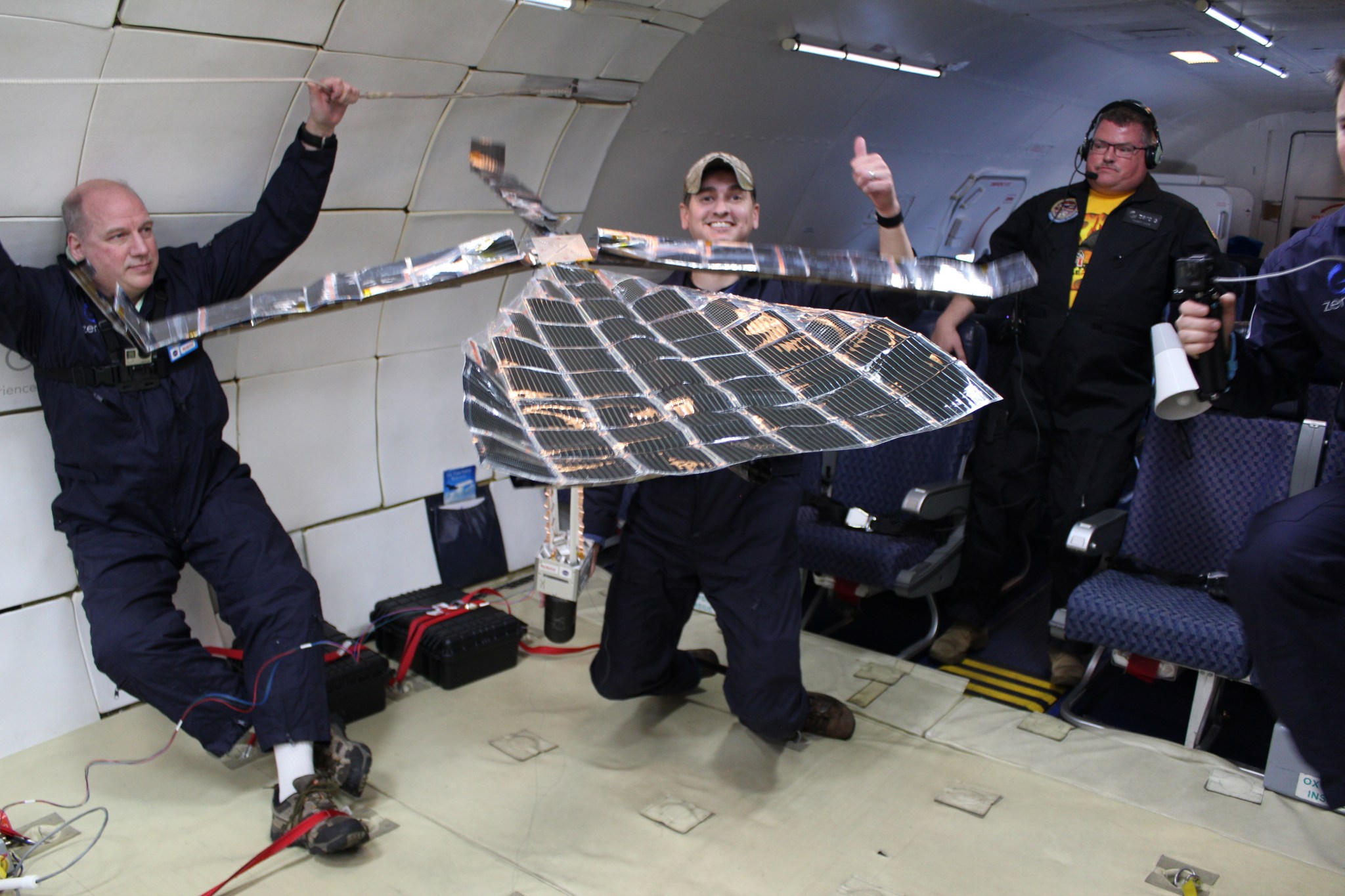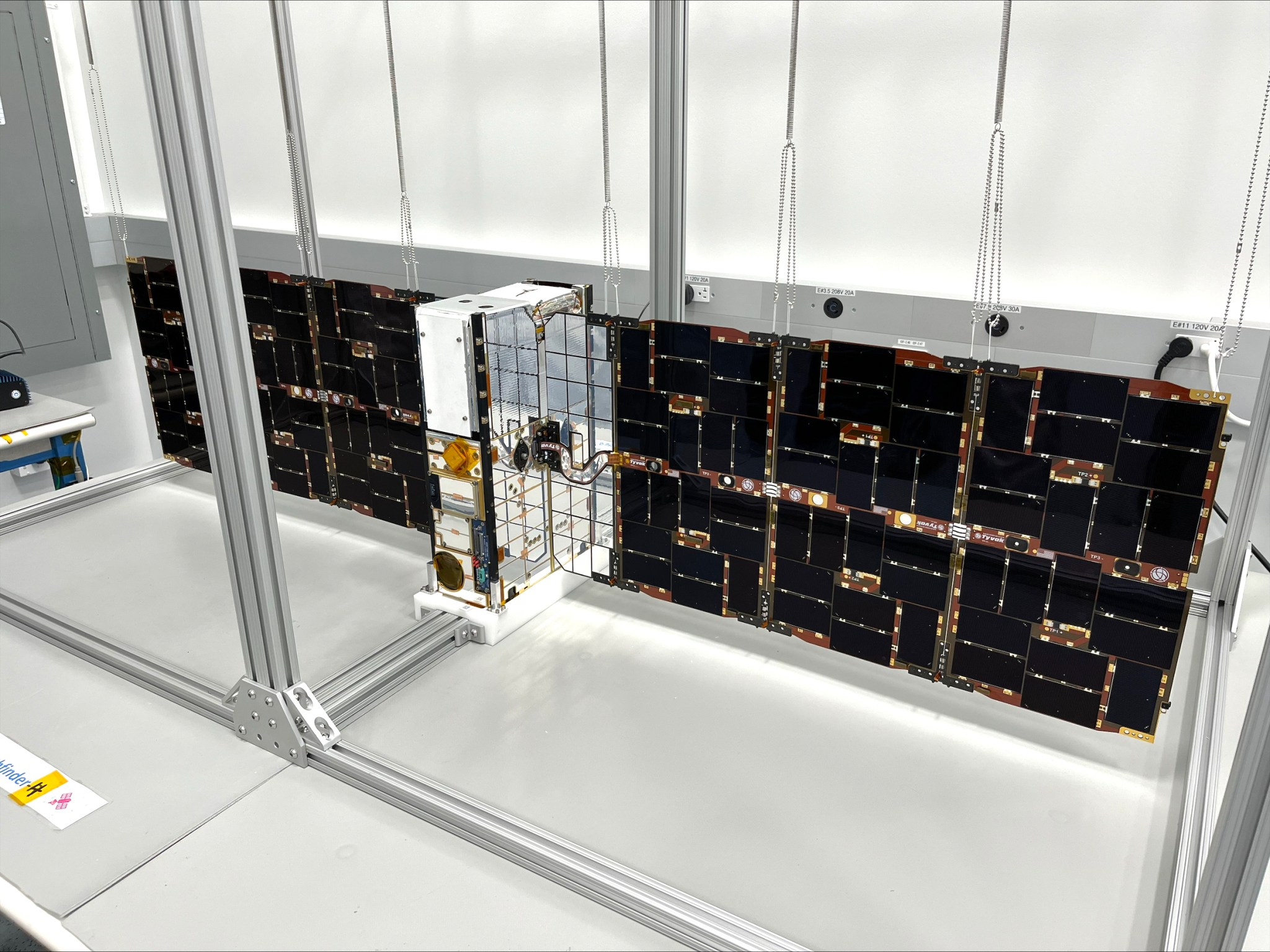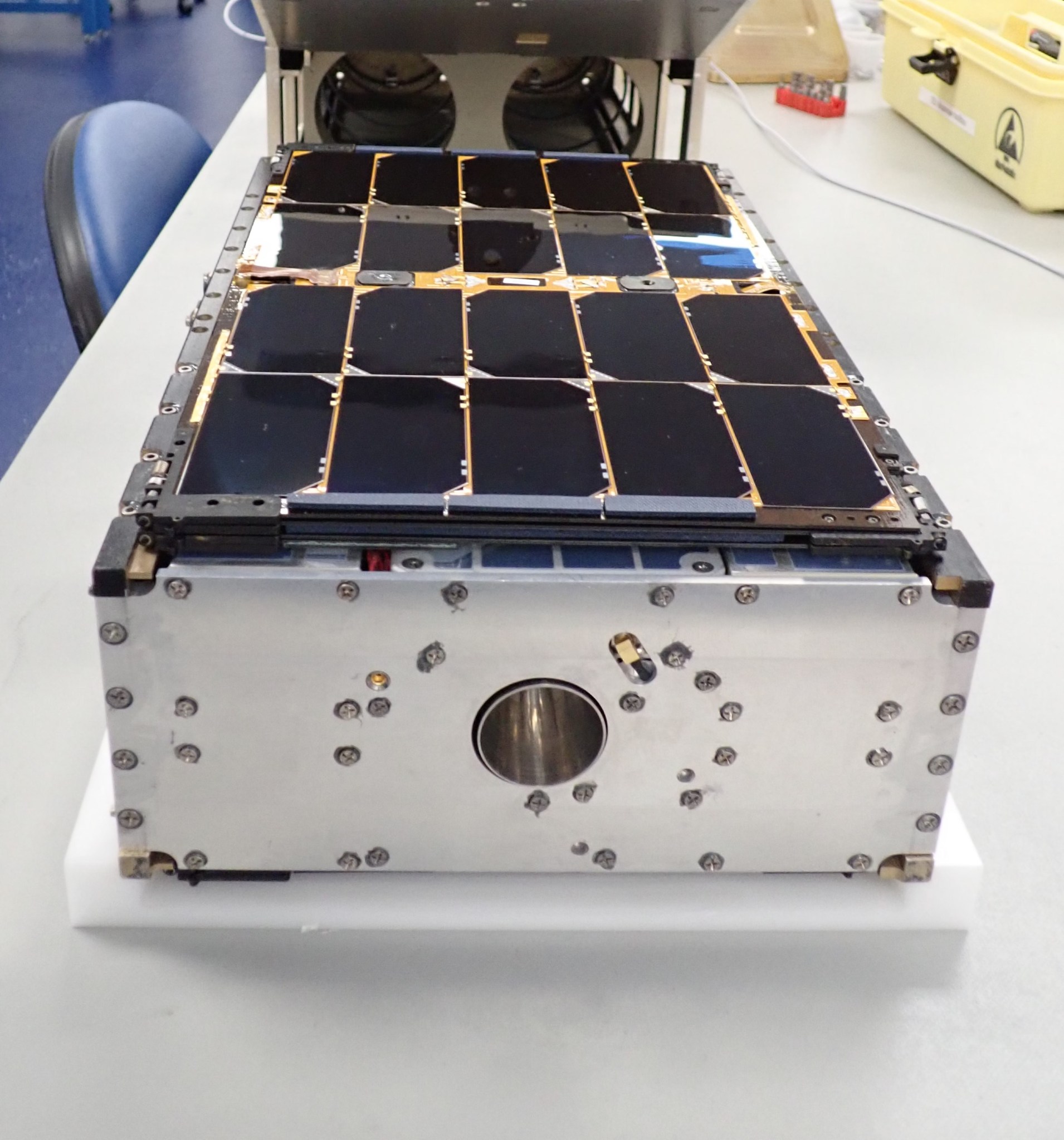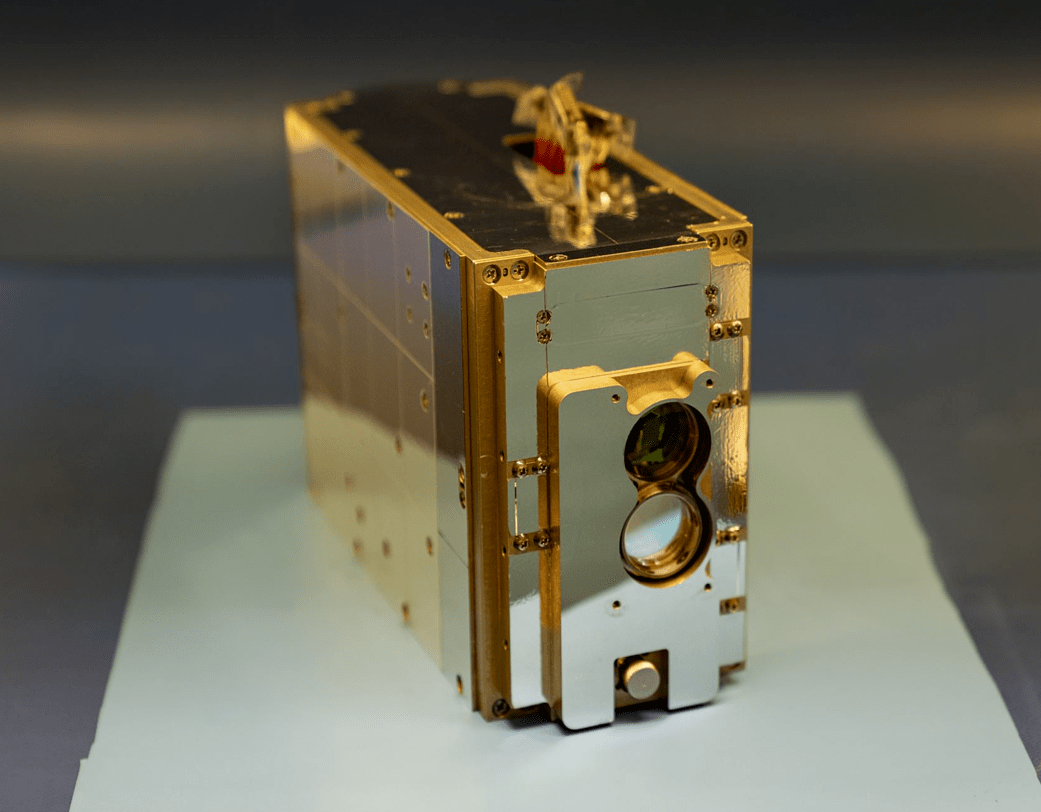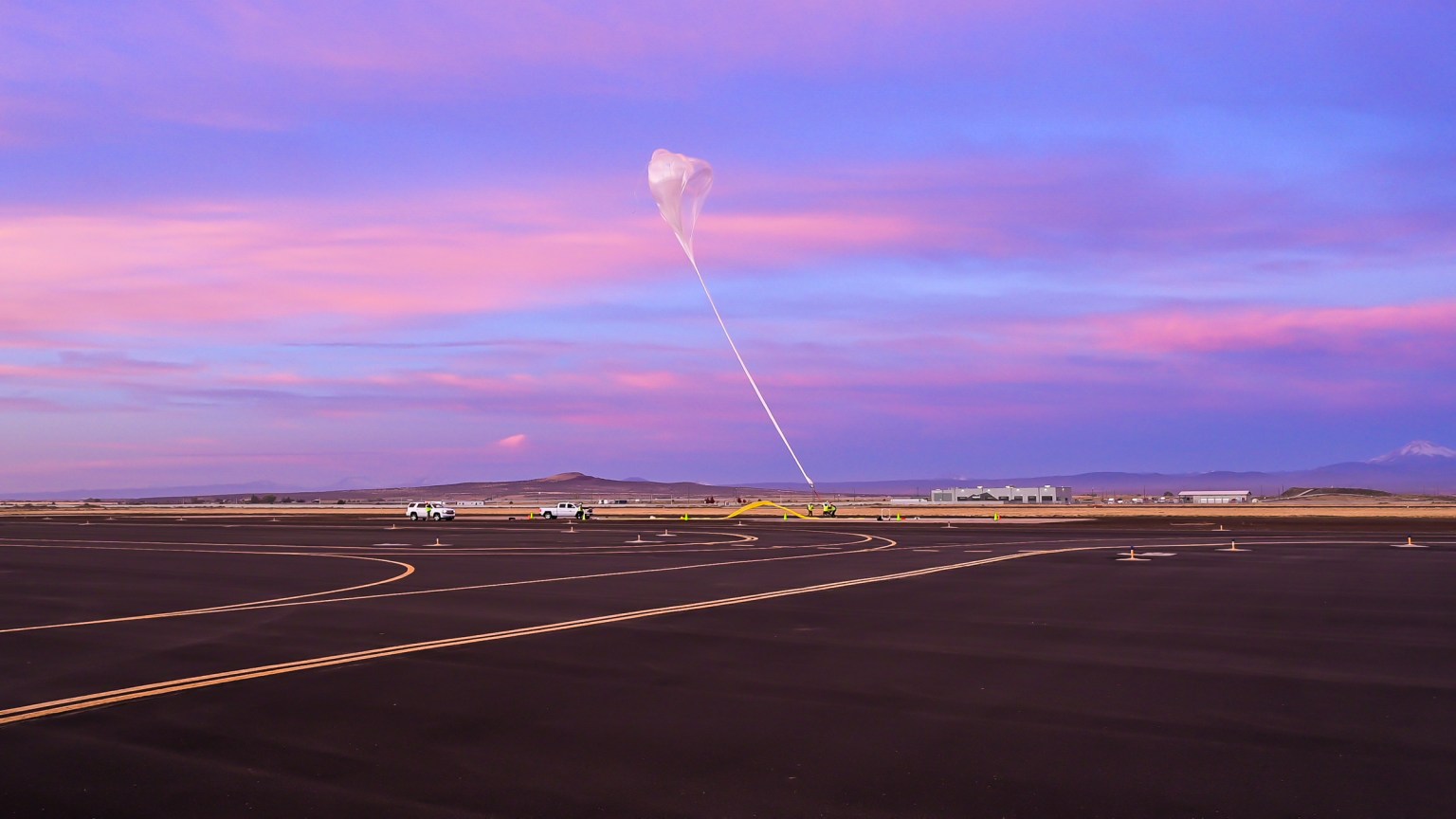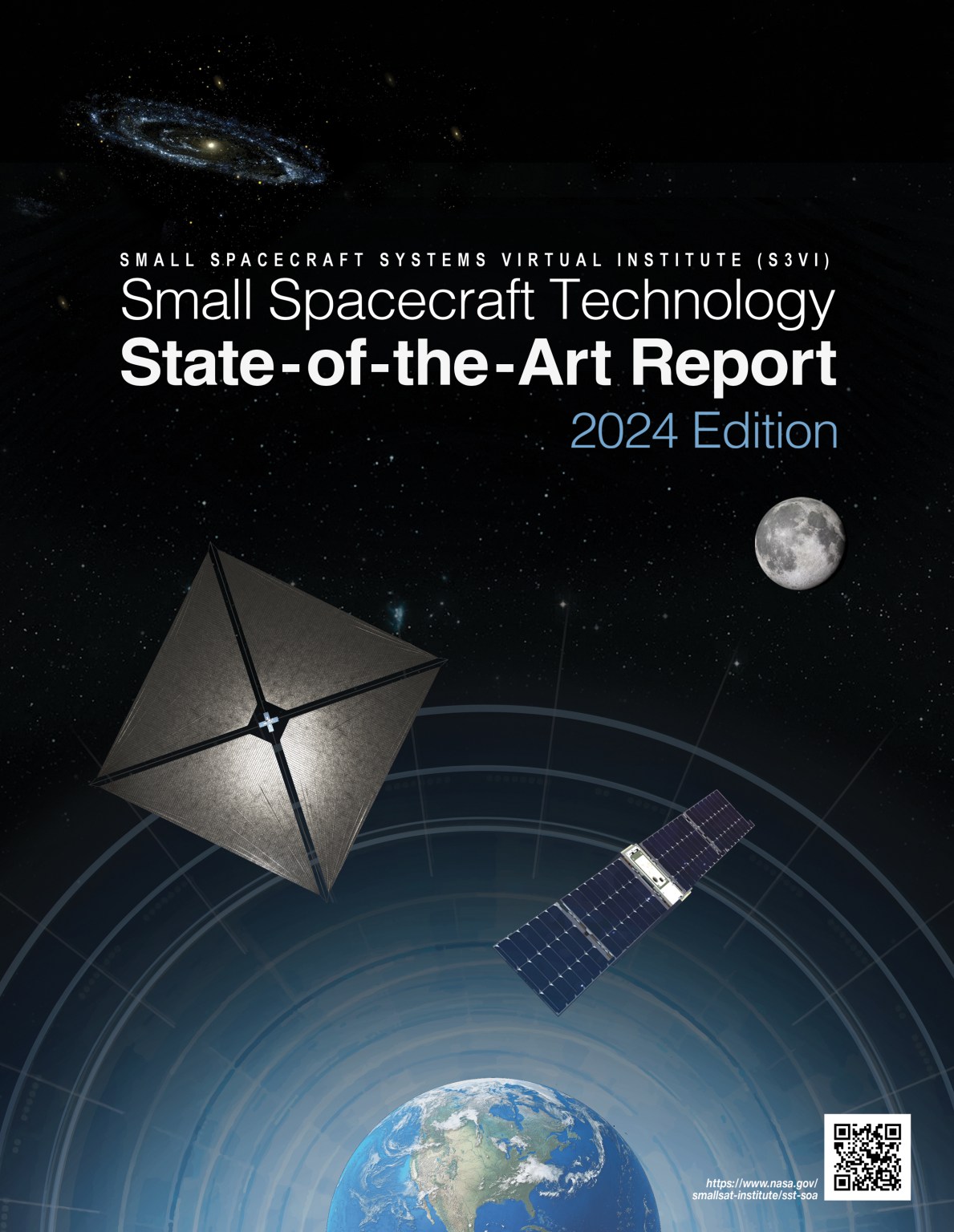NASA’s Pathfinder Technology Demonstrator (PTD) series of missions will test the operation of a variety of novel CubeSat technologies in low Earth orbit, providing significant enhancements to the performance of these small and effective spacecraft. Over the course of multiple planned PTD missions, the successful demonstration of new subsystem technologies will increase small spacecraft capabilities enabling direct infusion into a wider range of future science and exploration missions.
The PTD series of missions utilizes a commercial spacecraft bus and state-of-the-art MK II avionics platform developed by Terran Orbital Corporation, of Irvine, California. The six-unit (6U) spacecraft, named Triumph, is common to all PTD missions and easily accommodates different technology payloads being demonstrated without the need to completely redesign the spacecraft each time. In addition to providing the spacecraft, Terran Orbital also serves as the integrator for each technology payload into its respective spacecraft and performs in-orbit mission operations from the Terran Orbital mission operations center after each launch.
Pathfinder Technology Demonstrator Missions
Pathfinder Technology Demonstrator‑4
The PTD-4 mission will demonstrate a very high-power, low-volume deployable solar array with an integrated antenna called the Lightweight Integrated Solar Array and anTenna, or LISA-T, developed by NASA’s Marshall Spaceflight Center in Huntsville, Alabama. Current LISA-T designs are scalable from 100 to 500 watts, with options to scale up to 1000 watts and beyond. Utilizing small spacecraft for missions in deep space will necessitate the need for more electrical power, and LISA-T’s thin film solar array offers lower mass, lower stowed volume, and three times more power per mass and volume allocation than the current state-of-the-art thick film solar arrays.
On August 16, PTD-4 launched on SpaceX’s Transporter-11 mission from Space Launch Complex 4E at Vandenberg Space Force Base in California.
Pathfinder Technology Demonstrator‑R
NASA’s PTD-R mission will demonstrate simultaneous ultraviolet (UV) and short-wave infrared (SWIR) optical sensing from space for the first time via two 85-mm aperture monolithic telescopes mounted side-by-side, using a new compact custom electronics module and a novel, lightweight, carbon-composite optical housing and radiator. Named Deep Purple, the payload was designed and developed by Lawrence Livermore National Laboratory (LLNL) in Livermore, California. Deep Purple will observe the UV and short-wave infrared light from high-UV stars and the Milky Way’s galactic bulge.
The PTD-R mission is part of the PTD series of technology demonstration missions funded and managed by NASA’s SST program and in partnership with NASA’s Launch Services Program, LLNL, and Terran Orbital Corporation.
On August 16, PTD-R launched on SpaceX’s Transporter-11 mission from Space Launch Complex 4E at Vandenberg Space Force Base in California.
Completed Pathfinder Technology Demonstrator Missions
Pathfinder Technology Demonstrator‑1
The PTD-1 mission launched on January 24, 2021 to demonstrate the Hydros-C propulsion system with a water-based propellant that was developed through a public-private partnership with Tethers Unlimited, Inc., of Bothell, Washington. Carrying approximately one pint of water in a flexible bladder contained within in a metal vessel aboard the CubeSat, the propulsion system separates water into hydrogen and oxygen propellants by applying an electric current through the water. The propulsion system uses power provided by the spacecraft’s solar arrays to operate the miniature water electrolysis system. The demonstration tested propulsion performance through programmed thrust events which change spacecraft velocity and altitude executed by the hydrogen and oxygen-fueled combustion. This propulsion system provides higher thrust compared to other propulsion technologies while requiring lower power input. The data collected during this flight demonstration will be incorporated in future Hydros-C and its larger Hydros-M systems. The Hydros-M system is planned for several missions including NASA Science Mission Directorate’s Polarimeter to UNify the Corona and Heliosphere (PUNCH) mission slated to launch in 2025. PTD-1 was the first mission to demonstrate a water-based electrolysis propulsion system on any type of spacecraft.
Pathfinder Technology Demonstrator‑3
Launched on May 25, 2022 as part of SpaceX’s Transporter-5 rideshare launch, the PTD-3 spacecraft hosted the TeraByte InfraRed Delivery, or TBIRD, developed by the Massachusetts Institute of Technology Lincoln Laboratory in Lexington, Massachusetts, in collaboration with NASA’s Goddard Space Flight Center. On April 28, 2023, TBIRD, a technology for high-bandwidth laser communications, successfully achieved 200 gigabit per second (Gbps) throughput on a space-to-ground optical link between a satellite in orbit and Earth, the highest data rate ever achieved by optical communications technology. Funding for the TBIRD technology payload was provided by NASA’s Space Communications and Navigation program within the Space Operations Mission Directorate. NASA’s Space Technology Mission Directorate’s (STMD) Small Spacecraft Technology (SST) program provided funding for the spacecraft, mission operations, and launch.
NASA’s SST program invests in partnerships and collaborations with industry to access innovative ideas for next generation small spacecraft. The PTD mission series is an example of industry-inspired small spacecraft innovation that offers affordable, rapid turn-around opportunities to demonstrate technologies needed to increase the capability and utility of small spacecraft.
Fast Facts: PTD-Mission Series
- Each of the planned PTD missions consists of a six-unit, or 6U, CubeSat weighing approximately 25 pounds and comparable in size to two stacked cereal boxes.
- Each technology being demonstrated weighs no more than approximately 6.5 pounds and fits within a three-unit, or 3U, volume.
- Equipped with deployable solar arrays, the PTD spacecraft bus can deliver an orbit-average power of 45 watts and a peak power of 180 watts to payloads for each mission.
Fast Facts: PTD-1
- The use of traditional high-performance rocket fuels presents risks that include high toxicity, flammability, and extreme volatility. Water is a desirable fuel alternative for some applications to address these risks.
- Launch vehicles commonly generate thrust by burning hydrogen and oxygen in a rocket nozzle. The Hydros-C propulsion system generates thrust in the same way, after splitting water in orbit to produce hydrogen and oxygen propellants.
- The size and configuration of the propulsion system’s water tank can be tailored to fit the requirements of small spacecraft missions.
- Water is a “green” resource for propulsion. It is non-toxic, stable, and inexpensive.
- Water is also a safe fuel for personnel to use during spacecraft integration and poses no significant risks to other payloads during launch.
- Burning hydrogen and oxygen gas in a rocket nozzle generates more propulsive thrust than using “unsplit” water as propellant.
- The water electrolysis system demonstrated on PTD-1 may be applied in future deep-space missions using water resources found off Earth such as from comets or the Moon and Mars.
Fast Facts: PTD-3
- Aboard a CubeSat, the TBIRD technology payload demonstrated optical communications downlink at 200 gigabits per second,‑ the fastest the aerospace industry has ever seen.
- Radio waves have been used in space communications since the beginning of space exploration; however, as space missions generate and collect more data, the need for enhanced communications capabilities becomes paramount. Optical communications will provide significant benefits for missions, including bandwidth increases of 10 to 100 times more than radio frequency systems.
- Optical communications systems provide decreased size, weight, and power requirements. TBIRD is a 3U payload, meaning it is three 10-centimeter cubes put together, each roughly the size of a tissue box. TBIRD is hosted on a 6U CubeSat, which is six 10-centimeter cubes. Altogether, the CubeSat is the size of two stacked cereal boxes.
- CubeSats like PTD-3 offer the aerospace industry a cost-effective way to test technologies and capabilities. Their miniaturized size makes possible cost saving in areas like fuel and hardware development. In addition to being small, TBIRD is built from existing telecommunications hardware products that were repurposed for space flight. The team took commercial, off-the-shelf hardware, and redesigned it for space operations. Leveraging existing components also introduces cost savings.
- TBIRD downlinked data to Optical Ground Station–1 (OGS-1) at the Table Mountain Facility, in Wrightwood, California. The project chose this facility for its typically clear weather and high-altitude location. TBIRD shared this optical ground station with NASA’s Laser Communications Relay Demonstration and the upcoming Deep Space Optical Communications payload.
- The OGS-1 is also called the Optical Communications Telescope Laboratory (OCTL) and is managed by NASA’s Jet Propulsion Laboratory in Pasadena, California.
- TBIRD demonstrations that are part of an extended PTD-3 mission perform data downlink to Optical Ground Station–2 (OGS-2) located at the Maui Space Surveillance Complex on Haleakala, Maui, and also at the Low Cost Optical Terminal (LCOT) located at NASA’s Goddard Space Flight Center in Greenbelt, Maryland.
- TBIRD is helping demonstrate a networking concept known as delay/disruption tolerant networking (DTN). DTN allows data to reach its destination despite disruptions or unavailable data paths.
- TBIRD operated for six months, enabling NASA and the aerospace community to gather as much information as possible about optical communications and DTN on small satellites. The TBIRD mission is extended to September 2024.
Fast Facts: PTD-4
- LISA-T offers access to up to three times more power without a significant increase in mass and volume.
- PTD-4 will demonstrate LISA-T’s ability to deploy, generate power, and communicate with Earth.
- LISA-T will operate over the course of several months to validate the survivability and performance of LISA-T in space over time.
- LISA-T will be a demonstration of a core technology that may be scaled to enable a host of new types of future NASA missions.
- The PTD-4 spacecraft prepares LISA-T for deployment by firing a first burn mechanism to cut tie down cords and release the central booms.
- LISA-T’s booms passively deploy via stored kinetic energy – similar to the action of a compressed spring.
- A second burn mechanism is fired to release each of the four solar panels. A shape memory alloy that is embedded on the back of the panels actively unfolds the panels.
- The panels are locked into place, maintaining their shape and structure, for the duration of the mission.
- Power generated by the solar panels will be measured throughout several orbits each day and monitored over several months.
- A novel, light-weight antenna on board PTD-4 will be periodically pointed toward Earth and communications established and evaluated.
Fast Facts: PTD-R
- The Deep Purple optical payload is named for the UV light that the telescope will sense during the experiments. This light is present in sunlight and constitutes about 10% of the total electromagnetic radiation output from the Sun.
- The Deep Purple payload weighs approximately 11 pounds (5 kilograms).
- Deep Purple is expected to be the smallest space telescope providing both SWIR and UV imaging in space.
- Deep Purple will demonstrate new possibilities for scientific observations.
- Deep Purple’s optical housings are made from a novel high-strength carbon nanotube-loaded carbon fiber composite and the radiator is made from a high thermal conductivity carbon fiber composite.
- The LLNL payload was designed, built, tested, and delivered in about one year for under one million dollars.
Partners: PTD-Mission Series
- NASA’s Ames Research Center in California’s Silicon Valley manages the PTD mission series.
- NASA’s Small Spacecraft Technology program within the agency’s Space Technology Mission Directorate sponsors the PTD mission series. The program is based at NASA Ames.
- Terran Orbital Corporation of Irvine, California developed the PTD spacecraft bus and performs payload integration and mission operations for each mission.
Partners: PTD-1
- Tethers Unlimited, Inc., of Bothell, Washington developed the Hydros-C propulsion system demonstrated during the PTD-1 mission.
- NASA’s Glenn Research Center in Cleveland managed the development of PTD-1’s propulsion system.
- Spaceflight Inc., (now Firefly Aerospace) of Seattle provided integration and rideshare services for the PTD-1 spacecraft, which was launched on a SpaceX Falcon 9 rocket from Cape Canaveral Space Force Station in Florida.
- PTD-1 was launched as part of NASA’s Educational Launch of Nanosatellites 35 (ELaNa) mission, which was managed by the Launch Services Program based at NASA’s Kennedy Space Center. Selection of the payloads for ELaNa missions is provided by NASA’s CubeSat Launch Initiative (CSLI).
Partners: PTD-3
- The Massachusetts Institute of Technology’s Lincoln Laboratory in Lexington, Massachusetts developed the optical communications system demonstrated on the PTD-3 mission. This technology was funded by NASA’s SCaN program.
- NASA’s Goddard Space Flight Center in Greenbelt, Maryland managed the TBIRD project, in addition to multiple other optical communications projects, demonstrating NASA’s optical capabilities for future missions.
Partners: PTD-4
- NASA’s Marshall Space Flight Center in Huntsville, Alabama, developed the deployable solar array and integrated antenna technology planned for launch on PTD-4.
- The process of advancing the LISA-T integrated solar array included flight testing in reduced gravity through NASA’s Flight Opportunities program. As shown in the photo at the top of this page, the thin-film solar array successfully deployed on a parabolic flight provided by Zero Gravity Corporation in November 2019. (Image credits: NeXolve Holding, LLC)
- Several commercial partners contributed to the LISA-T technology to include:
- NeXolve Holding Company, LLC of Huntsville, Alabama assisted with the development of the LISA-T system.
- Ascent Solar Technologies, Inc. of Thornton, Colorado provided copper indium gallium selenide (CIGS) solar cells for the demonstration.
- MicroLink Devices of Niles, Illinois provided the inverted metamorphic (IMM) solar cells for the demonstration.
Partners: PTD-R
- Lawrence Livermore National Laboratory of Livermore, California developed the Deep Purple monolithic telescopes.
Learn more:
PTD-1
- Pathfinder Technology Demonstrator-1 TechPort Project Summary describes this mission’s objectives, benefits, and key partner organizations.
- Hydros-C TechPort Project Summary provides a description and anticipated benefits of the thruster tested on PTD-1.
- NASA video: Pathfinder Technology Demonstrator-1 Mission to Demonstrate Green Propulsion System
- NASA CubeSat to Demonstrate Water-Fueled Moves in Space
PTD-3
- Pathfinder Technology Demonstrator-3 TechPort Project Summary describes this mission’s objectives, benefits, and key partner organizations.
- Terabyte InfraRed Delivery 200Gb/sec Laser Communications System for LEO Direct-to-Earth Missions (TBIRD) TechPort Project Summary describes TBIRD’s demonstration objectives, anticipated benefits, and key partners organizations.
- Small Satellite Makes Big Impact on Optical Infusion
- NASA to Increase Data Transfer with the Terabyte InfraRed Delivery System
- NASA, Partners Achieve Fastest Space-to-Ground Laser Comms Link
PTD-4
- Pathfinder Technology Demonstrator-4 TechPort Project Summary describes this mission’s objectives, benefits, and key partner organizations.
For investigators:
Investigators interested in funding opportunities with the Small Spacecraft Technology program please visit here.
For technical inquiries about the PTD series, contact: arc-sst@mail.nasa.gov
For news media:
Members of the news media interested in covering this topic should reach out to the NASA Ames newsroom.





























